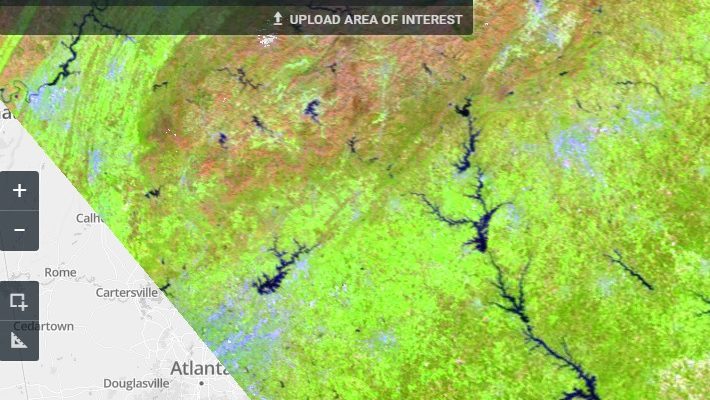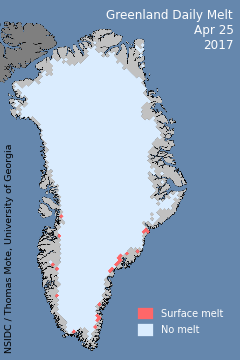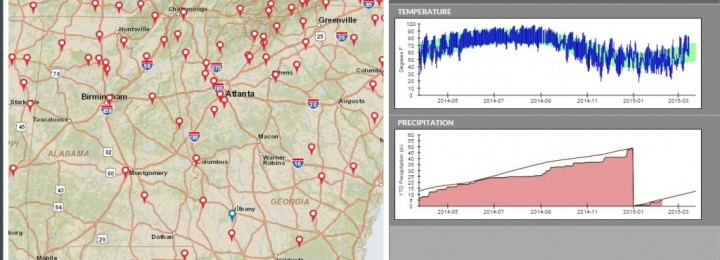Sources of weather and climate data
-

GeoAwesomeness.com posted a story about a new source of satellite data on land cover to its web site this week. It is a viewer which allows you to look at several different land cover satellites, including LandSat and MODIS and search for local coverage very quickly. I have just tried it out for a few…
-

We are almost at the end of April, and a look at the Southeast Regional Climate Center’s Perspectives tool shows that for many stations in the Southeast, the year to date temperature is the warmest on record. Many other stations are in the top two or three warmest years so far. You can try out…
-

If you are interested in watching the progression of the summer melting of the ice sheet on Greenland, you will find the web site for the National Snow and Ice Data Center useful. You can see daily updates of the melting conditions from satellites at https://nsidc.org/greenland-today/. Why do we care? A melting Arctic can change energy…
-

I am posting this here as much for myself as for all of you, but I want to provide you with a quick link to the USDA’s National Agricultural Statistics Service Quick Stats page. It allows you to find data on yields and other ag data for many different crops as a variety of spatial…
-

The climate of the future is still uncertain, in no small part due to uncertainties in how humans will behave with respect to emissions of carbon dioxide, changes in land use over time, and big questions about how the ocean will respond to changes in atmospheric composition and weather patterns. But if you like to…
-

Roger Gates, Extension ANR agent in Whitfield County, wrote me to ask for help in finding soil moisture data because he was struggling to fill out the soil moisture survey for the weekly Crop Progress and Condition Survey. I asked him if it would be OK to share his question and my answer because a…
-

The US Climate Resiliency Toolkit provides information and links to a variety of tools and data sources for a number of different climate-related events. Here are two that I’ve read about recently that you might find useful. The Water Resources Dashboard at https://toolkit.climate.gov/topics/water-resources/water-resources-dashboard provides information on rainfall forecasts, drought and other extremes, water quality and historical…